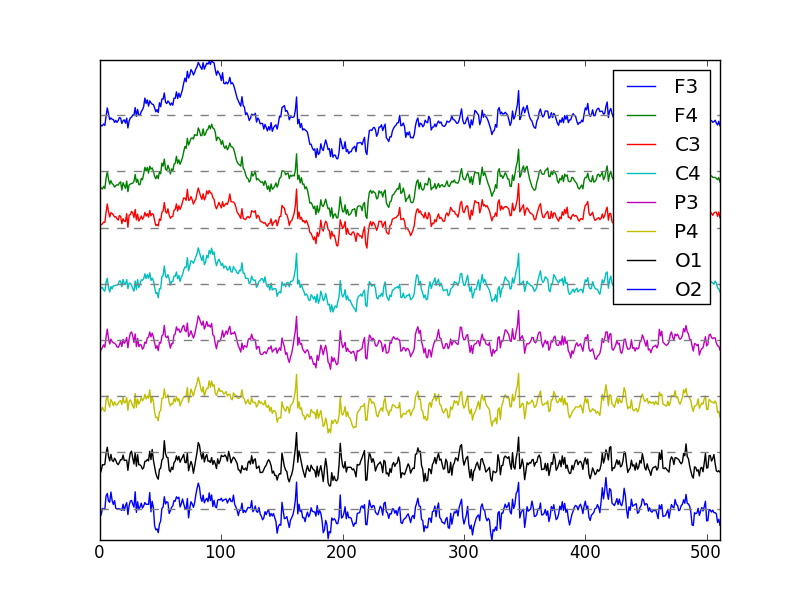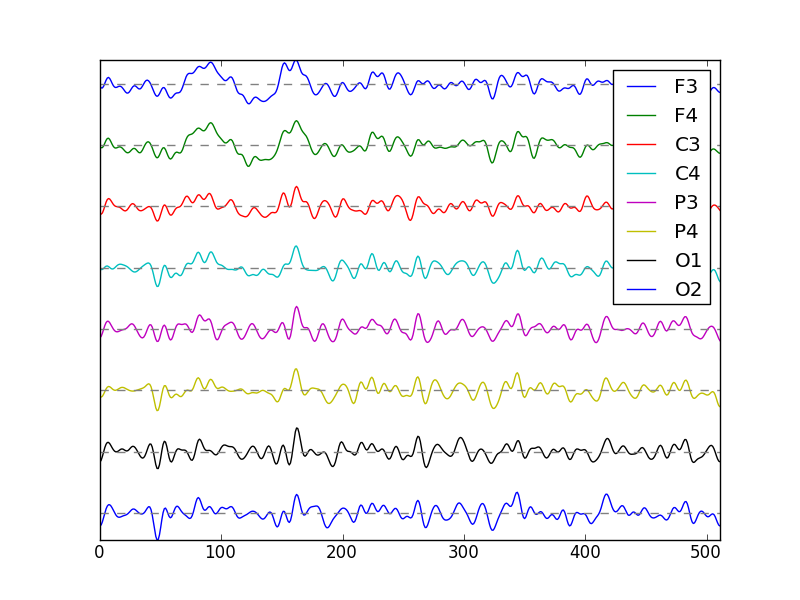Dealing with Artifacts¶
Here is the plot of EEG at the end of Getting Started with EEG Data.

Looks like we have an eye-blink artifact near sample 100.
Bandpass Filtering¶
One way to decrease the effect of eye blinks is to filter the data. Here is a link to the file bandpass.py, adapted from ObsPy, that defines the function bandpass. We can use it to pass frequencies from 1 to 30 Hz as follows:
In [1]: import json
In [2]: import numpy as np
In [3]: import matplotlib.pyplot as plt
In [4]: import bandpass as bp
In [5]: data = json.load(open('s20-gammasys-gifford-unimpaired.json','r'))
In [6]: first = data[0]
In [7]: eeg = np.array(first['eeg']['trial 1'])
In [8]: filtered = bp.bandpass(eeg[:8,:], 2,30, 256, corners=5, zerophase=True, axis=1)
In [9]: plt.figure(3);
In [10]: plt.plot(filtered[:8,4000:4512].T + 80*np.arange(7,-1,-1));
In [11]: plt.plot(np.zeros((512,8)) + 80*np.arange(7,-1,-1),'--',color='gray');
In [12]: plt.yticks([]);
In [13]: plt.axis('tight');
In [14]: plt.legend(first['channels']);

There still seems to be a little eye blink present. Unfortunately, bandpass filtering filters each channel independently, so we cannot use information about the relative amplitudes among the channels. Eye blinks tend to affect channels near the front the scalp more. Methods that extract this pattern would do a better job of removing eye blinks, such as Signal Fraction Analysis (SFA).